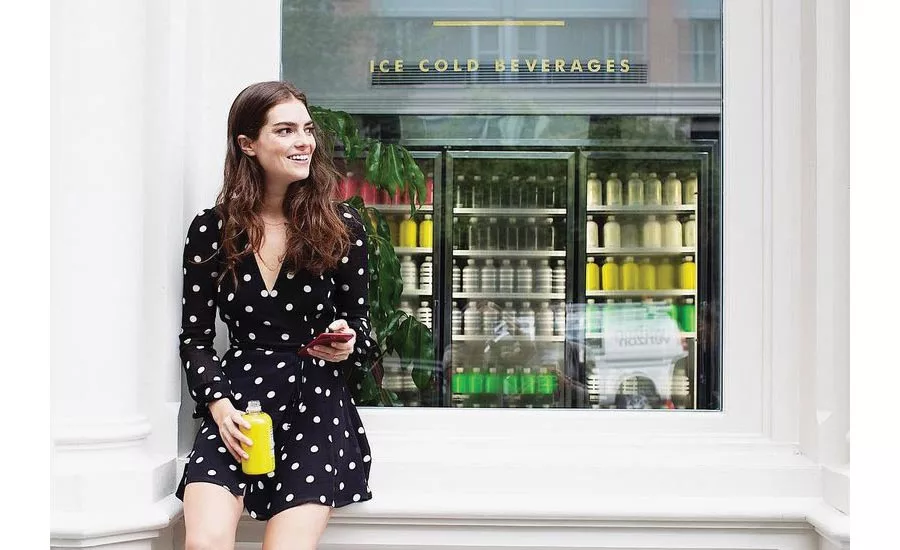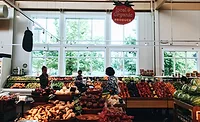Channel Strategies
Drug stores reformat, digitize to compete with online retailers
Wellness centers, frictionless checkout among latest strategies

Known as the place to pick up your meds along with those “few extra things,” drug stores are now exerting extra effort to compete with online retail giants, accommodate consumers’ growing health needs and demands, and leveraging technology to enhance their offerings. When it comes to drug stores, consumers are showing up for much more than just prescriptions as the channel looks to keep up with expanding shopping experience demands.
Drug store retailing sales garnered nearly $287 billion in 2018, largely in pharmaceutical sales, reports Chicago-based Mintel in its March 2019 report “Drug Store Retail - US.” As more people have access to healthcare, the drug store channel is reaping the benefits.
Conscious innovation
Although health-minded consumers are opting for healthier foods to improve their health, New York-based Nielsen’s 2019 Health Care study showed that only 24 percent of consumers are satisfied with the healthy food and beverage selection in drug stores, compared with 75 percent who expressed satisfaction of the healthy foods sold in traditional grocery stores.
“Everyone is moving toward this sort of ‘health and wellness’ and ‘sustainability’ trend. People are very conscious of what they’re putting in their bodies. Brands are going to start offering or remarketing healthier products — sparkling waters, seltzers — it fits in well with this transformation of drug stores into more of a health and wellness center,” says Chris Shaker, partner and consumer products senior analyst with Chicago-based RSM US LLP. “Customers are also willing to pay a premium price for products that are healthy and sustainable, presenting an opportunity for drug stores. Because [organic products] are innovative and well-liked, their higher price point produces larger margins.”
Because of consumers’ busy lifestyles, Shaker adds that drug stores have an opportunity by adding healthy food and beverage products.
“One thing we know right now is that ‘food away from home’ is big right now, because people are trying to eat on the go,” he says. “There’s opportunity on the beverage side when you look at how much prepared food and ready-to-drink options [are available] in-store now.”
On the health side, Amit Rawat, analyst at Global Market Insights (GMI), Selbyville, Del., notes that health-and-wellness trends have improved beverage sales at drug stores.
“Drug store outlets nowadays have an assigned health-and-wellness curated section containing beverage assortment products such as shelf-stable beverages, drink mixes, ready-to-drink coffee and tea, etc. for increasing consumer traffic and reviving anemic front-end sales,” Rawat explains. “Per an industry report we conducted, the drug store category in the U.S. accounted for marginal growth of 2.8 percent in 2018 and beverage sales accounted for 5.8 percent of total drug store sales, excluding alcohol.”
And according to Rawat, updated alcohol laws, higher gross margins and state-of-the-art technology have prompted retailers like Walgreens to re-enter the beverage alcohol market, which could also boost in-store sales as long as the category continues to perform well.
“A strong gross margin ranging from 20 percent to 25 percent on wine and spirits sales have influenced major drug store companies to include alcoholic beverages in their product catalog,” he adds.
However, Mintel reports that the drug store channel faces some vulnerability because of outside pressure from retail rivals, especially if corporations like Amazon enter the mix.
“Customer preferences are changing, and the acceleration of online retail will continue,” RSM’s Shaker says. “A strong digital strategy that allows the customer to have that positive experience through any channel is going to help drug stores compete with Amazon and other digital retailers.”
Leveraging the in-store experience
Mintel reports that 45 percent of consumers use a combination of in-store shopping and digital channels to purchase beverages and other products. Additionally, the market research firm reports that consumers still think of traditional drug stores first when it come to health-related needs. These insights suggest an opportunity for the channel to enhance its in-store offerings.
For example, CVS Health launched a CVS Pharmacy nationwide expansion of its HealthHUB, a store format using 20 percent of the drug store for health services, durable medical equipment and supplies, counseling on nutritional health by an in-store dietitian and weight loss programs.
However, Mintel details that it’s unknown how long this consumer mindset will last as drug stores are seeing increasing competition from other channels.
“The pharmacy is still 70-75 percent of revenue at drug store retailers, but beauty products could represent some opportunity,” RSM’s Shaker says. “Customers are looking for a retail experience. I think as drug stores move down this path of being a health and wellness venue, they can incorporate more interactive retail experiences that include beauty along with health and wellness, and leverage that experience to get consumers to do additional shopping in beauty or other categories while they’re there to boost sales.”
Shaker says that due to the prevalence of omnichannel shopping by today’s consumer, digital strategies also need to be a focus for drug stores to keep up with competing channels.
“The digital strategy can motivate consumers to shop at the drug store by providing in-store offers, as opposed to using a couple clicks on Amazon.”
Another way that drug stores are utilizing technology to draw in consumers is through “frictionless checkout” systems. or other digital payment modes such as mobile wallets, digital payment apps and Unified Payments Interface (UPI) services. GMI’s Rawat notes that self-checkout and cashier-free stores elevate consumer’s in-store experience; consumers can walk in the store, grab what they need, and pay at their convenience.
“The reason [drug store executives] love frictionless checkout is it requires the customer to have an account through a loyalty program or something similar. This unlocks the data on purchasing preferences and habits for creating targeted offers,” RSM’s Shaker says. “The continued ability to access data, collect data and use it in smart ways is critical for drug stores’ survival.”
A healthy outlook
According to Mintel, as drug stores fortify their position as healthcare authorities, increasing healthcare access while keeping prices steady prices will be key to future success. Although convenience remains important, drug stores also must offer digital options to maintain omnichannel consumers. And although nonmedicinal sales still make up only a small portion of drug store revenues, the report advises drug store retailers to strategically aim to grow and shift inventory and in-store experiences to maintain their consumer base.
Mintel concludes, “To stay relevant in this tepid landscape, drug store chains need to continue evolving quickly to incorporate technology and look beyond core product competencies for opportunities to grow the business.”
Looking for a reprint of this article?
From high-res PDFs to custom plaques, order your copy today!






